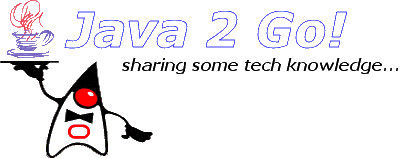I was greatly impressed with the quality we can achieve with respect to user interfaces in web based systems nowadays. To build real world applications provided with extremely rich interfaces like GMail or Yahoo! seems not to be so difficult as one could imagine. At first, it may seem a bit scary to face the challenge of widely adopting AJAX in our projects but my feeling (which has certainly been confirmed during J1) is that we've already reached the point of no return. Web developers should already be capacitating themselves in order to be able to provide web applications with a much more modern, interactive and richer user interface. Those who choose to ignore this fact are likely to be left behind. Offering only the minimum is about to become unacceptable.
Several libraries, plug-ins for the largest used IDEs (unfortunately JDeveloper is not included in that list, but that's another matter) and other stuff are emerging so fast that we must pay attention to them now or it might be more and more difficult to catch up later.
I'm quite sure this is not going to be a very smooth transition. All those concepts and approaches that have being ruling our user interface design and implementation (such as very well defined life-cycles and the old comfortable synchrony) are to be brought to the ground by absolute asynchrony and an avalanche of timers and messages triggering events, etc. This new approach is the foundation of the freedom and interactivity that are bringing the web to the next level.
Well, the good news for us working with Oracle JDeveloper is that Oracle is certainly aware of this process. A brand new set of ADF Faces components are coming along with JDeveloper 11g and promise to enable this great new technology in a very easy way. I'm talking about ADF Faces Rich Client which, just like ADF Faces itself, has just been donated by Oracle to the Apache foundation. For those interested in getting a taste of it, here are some links from OTN:
Another thing that caught my attention was jMaki. It's a framework for web 2.0 development that seems to make the task much faster and easier. It comes with most of the main widgets libraries, like Google, Yahoo! and DOJO out of the box. jMaki was created under Java.net GlassFish community seal and, until now, there's only a NetBeans plug-in available; however, it may be used with any J2EE IDE (running JDK 5 or greater). A very interesting characteristic of this framework is the solution given to communication between widgets. It's called GLUE and uses JavaScript functions to deliver a message bus to publish/subscribe events which makes it possible for a full decoupling of the various components (or widgets) since there's no need for argument passing between them at all. It's really worth looking at:
Well... I think that's enough for now. Next subject will be "JVM performance and monitoring".
Best regards for all!
 Switch to new Dynamic Views
Switch to new Dynamic Views

